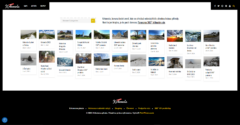What is Antoine Lavoisier best known for?
Which element did Lavoisier help to name?
What was Antoine Lavoisier's nationality?
In which century did Lavoisier conduct most of his work?
Which law is Antoine Lavoisier credited with formulating?
What was Lavoisier's role in the French government?
With which scientific process did Lavoisier associate the term 'combustion'?
Which organization did Lavoisier join in 1768?
Lavoisier was executed during which historical event?
Which publication is often attributed to Lavoisier as a crucial text in chemistry?
Who was Lavoisier's wife and collaborator?
Which of these compounds was named by Lavoisier?
What did Lavoisier prove about water through electrolysis?
In what year was Lavoisier executed?
Lavoisier's experiments led to the overthrow of which outdated scientific theory?
What was the main focus of Lavoisier's scientific research?
Lavoisier's work helped to systematize which scientific field?
Which of the following is a result of Lavoisier's research?
Which device did Lavoisier use to study heat and combustion?
Lavoisier was influential in the reform of which country's agricultural practices?

Antoine Lavoisier Quiz
Step into the fascinating world of chemistry with our engaging Antoine Lavoisier Quiz. As the father of modern chemistry, Lavoisier’s groundbreaking work transformed our understanding of chemical processes and laid the foundation for future scientific discoveries. This quiz is more than just a test of knowledge; it’s an immersive journey through the life and contributions of one of history’s greatest scientific minds.
Why Take the Lavoisier Quiz?
Whether you’re a student, educator, or a science enthusiast, this quiz offers a unique opportunity to:
- Enhance Your Knowledge: Delve into Lavoisier’s theories, experiments, and influential writings.
- Test Your Skills: Challenge yourself with questions that vary in difficulty, designed to assess your understanding of chemistry fundamentals.
- Engage with History: Discover the historical context of Lavoisier’s work and its impact on the development of science.
- Boost Critical Thinking: Stimulate your mind by connecting Lavoisier’s principles to modern chemical practices.
- Enjoy Learning: Approach science in a fun and interactive way that encourages curiosity and retention.
Unique Features of the Quiz
This isn’t just any typical quiz. Here’s what sets the Antoine Lavoisier Quiz apart:
- Interactive Style: The quiz incorporates multimedia elements, including images and diagrams, to enhance your learning experience.
- Immediate Feedback: Receive instant results to understand your strengths and areas for improvement.
- Resource Links: Gain access to additional reading materials and resources related to Lavoisier’s work after completing the quiz.
- Community Engagement: Join a growing community of fellow quiz takers to share insights and experiences.
The Value of Engaging with Lavoisier
Understanding Lavoisier’s contributions isn’t just about the past; it profoundly shapes our appreciation of scientific methodology and inquiry today. By participating in this quiz, you:
- Gain insight into the evolution of chemical nomenclature and the law of conservation of mass.
- Recognize the interplay between scientific discovery and societal progress.
- Create a deeper appreciation for the meticulous nature of experimental science.
Join us in celebrating the legacy of Antoine Lavoisier. Test your knowledge, learn something new, and reignite your passion for chemistry with our Antoine Lavoisier Quiz. Ready to start your journey?
What is Antoine Lavoisier best known for?
Which element did Lavoisier help to name?
What was Antoine Lavoisier's nationality?
In which century did Lavoisier conduct most of his work?
Which law is Antoine Lavoisier credited with formulating?
What was Lavoisier's role in the French government?
With which scientific process did Lavoisier associate the term 'combustion'?
Which organization did Lavoisier join in 1768?
Lavoisier was executed during which historical event?
Which publication is often attributed to Lavoisier as a crucial text in chemistry?
Who was Lavoisier's wife and collaborator?
Which of these compounds was named by Lavoisier?
What did Lavoisier prove about water through electrolysis?
In what year was Lavoisier executed?
Lavoisier's experiments led to the overthrow of which outdated scientific theory?
What was the main focus of Lavoisier's scientific research?
Lavoisier's work helped to systematize which scientific field?
Which of the following is a result of Lavoisier's research?
Which device did Lavoisier use to study heat and combustion?
Lavoisier was influential in the reform of which country's agricultural practices?





